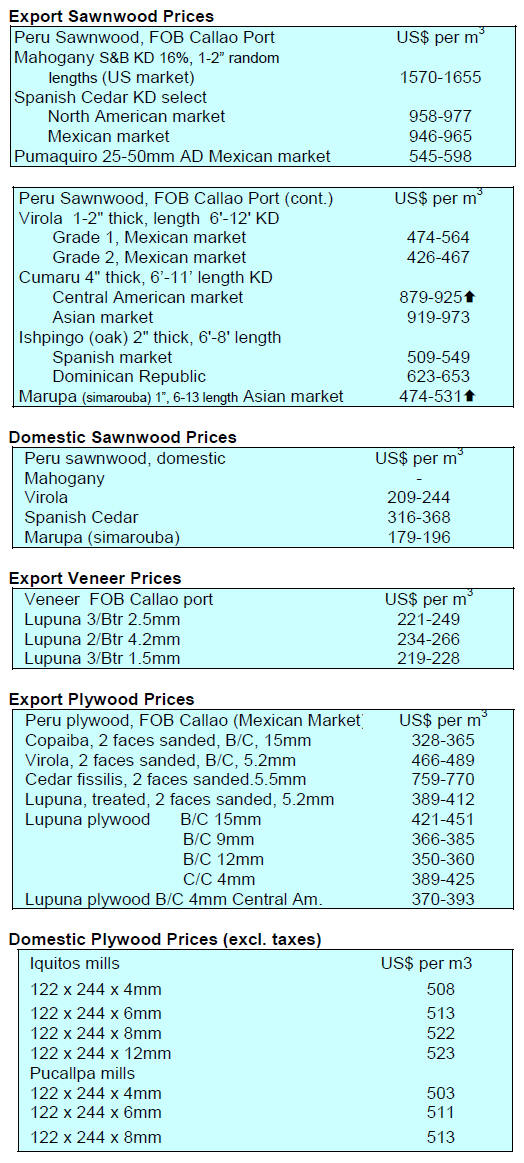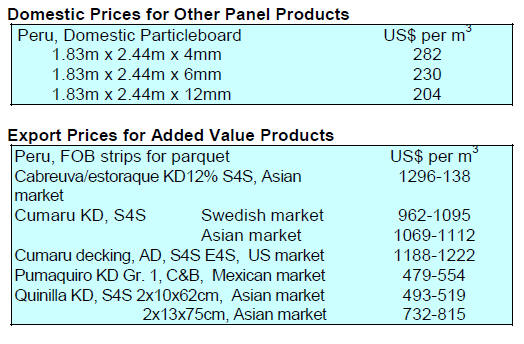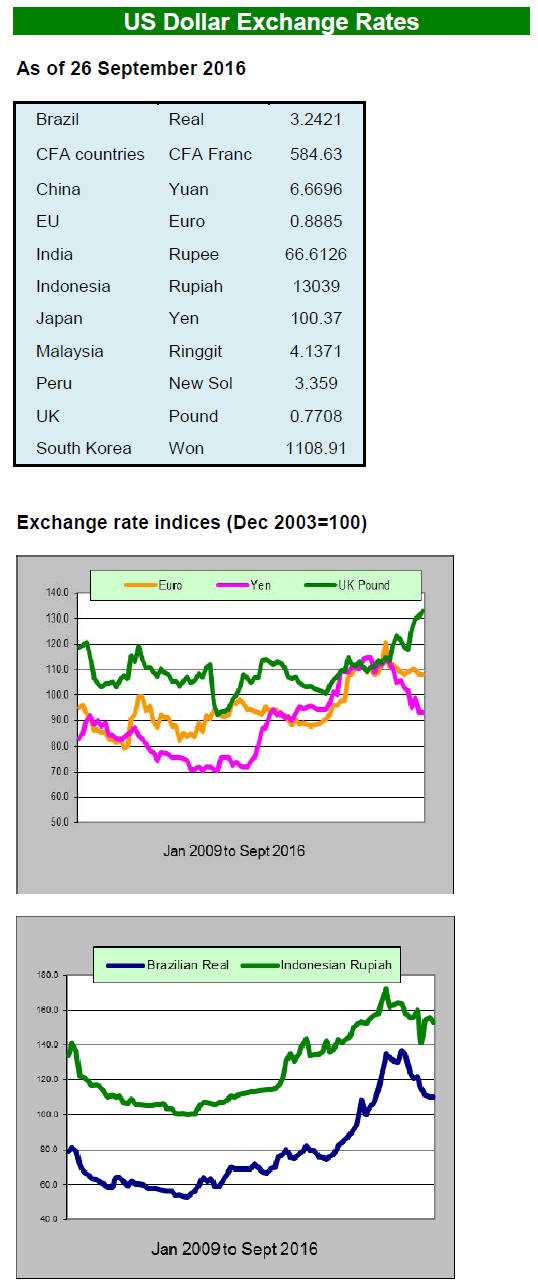2. GHANA
First African Development Bank funds for
PPP forestry
project
The African Development Bank (AfDB) is joining with
private sector investors for a project to restore degraded
forest reserves and double the area of sustainable forest
plantations.
A press release from the AfDB says ¡°This agreement is a
first-of-its-kind Public-Private Partnership (PPP) in its
forest sector and is backed by a US$10 million
concessional loan from the Climate Investment Funds'
Forest Investment Program (CIF FIP). It is also
supplemented by US$14 million in co-financing from the
AfDB.
The press release quotes the AfDB Director for Private
Sector Department, Kodeidja Diallo, as saying ¡°This
project is the Bank¡¯s first direct intervention in forestry
through a private sector window and will serve as a pilot
in setting the pace for engaging the private sector in
sustainable forest plantation management.
The concept is replicable and demonstrates how a close
collaboration between the public and private sectors can
contribute in transforming the future outlook for private
sector participation in forestry.
Reacting to the Board Approval and on behalf of the
project sponsors, Paul Hol, Executive Director of Form
International, stated that ¡°this is a breakthrough for private
investments in forestry on the continent.
I believe that this project and collaboration between AfDB
and Form Ghana Ltd can be a very important step to
enable the expansion of large scale reforestation and
landscape restoration projects in Africa. In this way it can
be an important front running project for the African
Forest Landscape Restoration Initiative (AFR100) from
the World Resources Institute (WRI) and NEPAD which
aims at restoring 100 million ha of land in Africa by the
year 2030¡±.
The Form Ghana reforestation project will establish a
forest plantation in areas that used to be productive semideciduous
forest reserves but that have been severely
degraded.
See http://www.afdb.org/en/news-and-events/article/afdbapproves-
usd-14-million-for-its-first-private-sector-directinvestment-
in-restoration-of-degraded-forests-throughsustainable-
forest-plantations-in-ghana-15955/
See also:
http://www.forminternational.nl/portfolio-item/formghana/
Stakeholders urged to help protect forest resources
The Minister of Lands and Natural Resources, Mr. Nii
Osah Mills, has called on stakeholders in the industry to
help protect the Forest and Wildlife resources of the
country.
At a press conference the minister said the natural
resources of the country are under intense pressure from
farming, illegal mining and illegal chainsaw felling.
The Minister reported on the success of the Rapid
Response Unit (RRU) within the Forestry Commission
(FC), which operates to deal with illegal activities in the
forest. The RRU was established to augment the Military
and Police Task forces to check, monitor and destroy all
unscrupulous practices which are key threats to closed and
open forests across the country.
Mr. Mills said his ministry was well aware of the many
challenges confronting the forestry sector such as
inadequate financing sources, the continuous depletion of
both natural and plantation resources and inadequate
logistics.
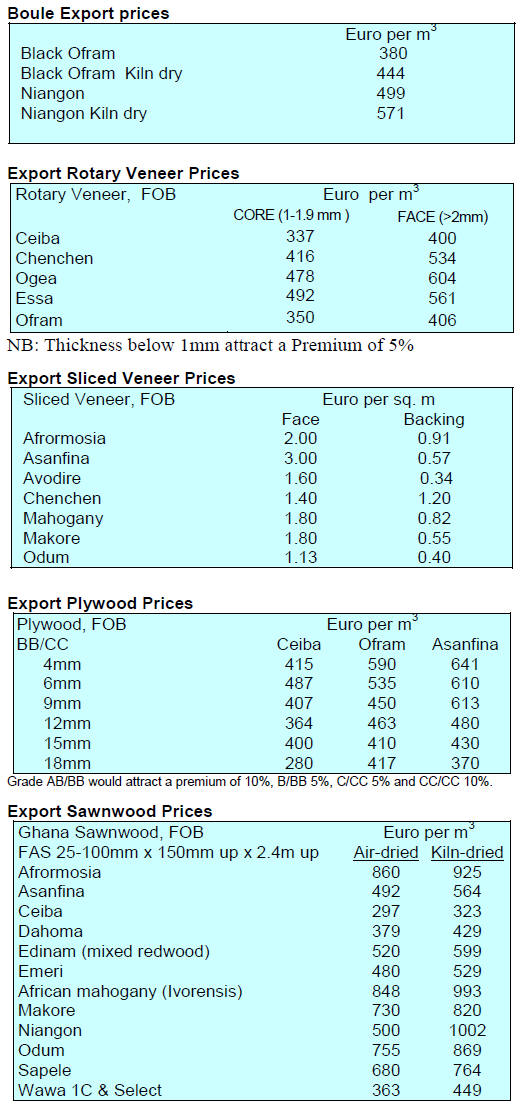
3.
SOUTH AFRICA
Truss makers threaten to turn to
steel
The South African magazine Sawmilling South Africa
reports that September sales of structural timber sales are
still strong and this can be judged from stock levels at
most mills.
It is reported that some mills are down to just a few days
stock and this, although good on the one hand, is not good
on the other as merchants and fabricators are experiencing
frustration as they cannot get the required dimensions for
their roof truss plants.
Some end-users are even talking about turn to steel if the
situation does not improve.
While this was an empty threat years ago, now with the
development of light roles steel components, the
competition from alternatives is a serious threat to our
industry.
The editor of the magazine writes ¡°Sawmillers need to sit
up and take note of the situation and try to address these
shortages. Light weight steel is already making serious
inroads in to the truss market and we must not let this
continue under our noses.¡±
Timber engineered product awards
The Institute for Timber Construction (ITC-SA) recently
showcased and rewarded top class workmanship in the
fields of decking, timber frame construction and roofing.
Sawmilling South Africa reports; ¡°Four entries were
received in the Alterations and Additions category ranging
from economical extensions to full-scale remodelling.
The Structures Smaller than120 sq.m. category saw four
entries varying from a ¡®granny flat¡¯ to a beautiful starter
home all of which clearly demonstrated a high standard of
skills and finishes.
Five entries were received for the Structures Larger than
120 sq.m, but below 220 sq.m. These projects ranged from
beach homes to those built on particularly sensitive sites,
showcasing the versatility and gentle approach to
construction made possible with timber frame.
The Structures Larger than 220 sq.m category saw three
entries, which all illustrated a variety of styles and quality
finishes capable of satisfying the most discerning taste.
Eight entries were received for the new Roofing category,
which encompasses commercial and residential roofs as
well as exposed trusses. All entries demonstrated the
inherent versatility timber lends to the design, fabrication
and erection of roofs across a broad spectrum of building
styles.¡±
For more see: http://www.timber.co.za/
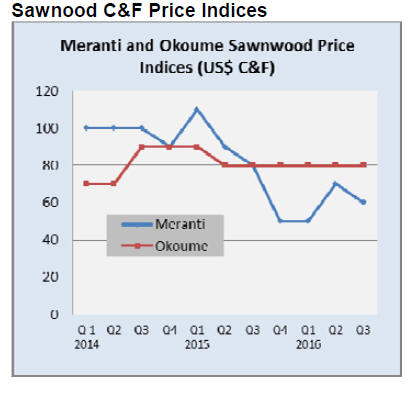
4.
MALAYSIA
Increased first half 2016 wood product
exports
The Malaysian Timber Industry Board (MTIB) has
released export statistics for the first half of 2016.
Between January and June Malaysian exports of wood
products were valued at RM10.923 billion up 4.4% year
on year.
First half 2016 export values
Furniture RM3.603 billion
Plywood RM2.243 billion
Sawnwood RM 1.633 billion
Logs RM 888.4 million
MDF RM 615.9 million
Builders' carpentry and joinery RM 579.1 million
Mouldings RM 423.9 million
Particle/chipboard RM 174.7 million
Veneer RM 167.8 million
Others RM 593.6 million
Guidelines for Frontline Customs Officers
A National Workshop on Developing Timber Trade
Guidelines for Frontline Customs Officers was held in
Putrajaya, Malaysia.
This was jointly organised by the Ministry of Plantation
Industries and Commodities, the Malaysian Timber
Industry Board and The Wildlife Trade Monitoring
Network (TRAFFIC) in collaboration with the World
Customs Organization (WCO) and ITTO.
The WCO and ITTO recognise there is a lack of specific
guidelines and reference material on wood products for
frontline customs and other border officials so this
workshop aimed to to the first step in developing Timber
Trade Guidelines for customs officers.
The WCO signed a Memorandum of Understanding
(MOU) with TRAFFIC to assist in developing draft
Timber Trade Guidelines and funding was provided by
ITTO.
The purpose of the guidelines is to assist customs officers
validate and verify the classification and legality of wood
products and is part of a phased approach by WCO
towards enhancing the capacity of frontline customs
officers in their daily operational work.
Participants were informed that the guidelines will utilise
Malaysia¡¯s legislation, systems and procedures in term of
the legality of timber trade as a pilot project.
Occupational Safety and Health (OSH)
An OSH information campaign was recently organised by
the Sarawak Timber Industry Development Corporation
(STIDC) to cater for the wood based industry in Sarawak.
The campaign served as a platform to promote OSH in the
workplace. Besides increasing the understanding of the
Occupational Safety and Health Act 1994, the workshop
aimed to instill a safe and healthy work culture amongst
managers and workers.
As a follow up to the campaign OSH audits were
conducted in logging camps to assess OSH practices..
STIDC General Manager, M Sarudu Hoklai, has said that
the safety and health of employees are prerequisites for
forest certification.
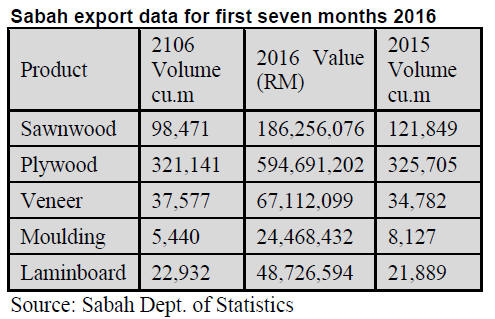
India marketing mission report
In August this year the Malaysian Timber Council (MTC)
mounted a marketing mission to Chennai and Bengaluru.
The rational for this mission, says the MTC, hinged on the
assessment that the Indian market offers many advantages
to Malaysian exporters as India traditionally prefers
tropical hardwoods and the proximity between the two
countries is advantageous in terms of transportation cost.
In a press release the MTC reported the seminars as well
as business to business (B2B) sessions were held in
Chennai and Bengaluru. The B2B meeting in Chennai
attracted 41 buyers from 37 companies; while 106 buyers
from 80 companies attended the B2B sessions in
Bengaluru.
Buyers in Bengaluru came from 10 states and 16 cities in
India, namely; North (Delhi, Uttar Pradesh, Haryana),
South (Karnataka, Kerala, Telengana and Tamil Nadu),
West (Maharashtra, Gujarat) and East (West Bengal). The
presence of these buyers indicates how keen they are to
see what Malaysia has to offer.
For more see: http://mtc.com.my/releases/
5. INDONESIA
Interest rate cut to boost credit growth
Bank Indonesia lowered interest rates at its last meeting
saying the stable domestic economy has allowed the Bank
to adopt a loser monetary policy which will pump money
into the market and should provide for accelerated
economic growth despite the uncertain global economic
outlook.
This lower interest rate is expected to boost credit growth
in the private sector. Rising credit growth as a result of
business expansion and higher household consumption
should boost overall economic growth.
Community forest management target on track
The success of Indonesia¡¯s community managed forests
was showcased recently in Jakarta. This comes a year after
the launch of the government¡¯s target of allocating 12.5
million hectares of forests to be managed by communities
through social forestry schemes.
The community management target is part of the five year
plan (2015-2019) which aims at providing for 2.5 million
hectares annually of forests to be under community
management. Expectations are high for this scheme as it is
seen as providing for better management, solving tenure
issues and tackling rural poverty.
Post-Brexit trade to be boosted
Indonesian Ambassador to the UK, Rizal Sukma, is
working with small and medium sized companies in the
UK which are showing interest in a wide range of
products, including wooden items, produced by SMEs in
Indonesia. SMEs play a vital role in the Indonesian
economy contributing close to 58% of Indonesia's GDP.
Trade between Indonesia and the UK is rather small with
Indonesia¡¯s exports to the UK amounting to about US$1.5
billion, a fraction of Indonesia¡¯s total exports of over
US$160 billion. On the other hand Indonesian imports
from the UK were only US$800 million last year.
To support the initiative by the Ambassador the
Indonesian Chamber of Commerce and Industry is putting
together a plan for ¡°business to business¡± matching as the
first step to expanding commercial contacts.
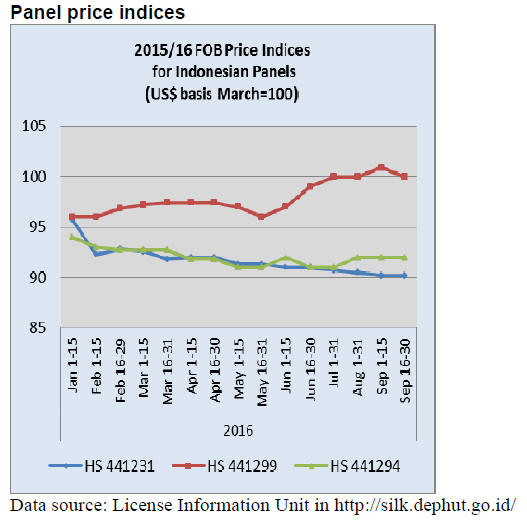
Renminbi to be promoted for trade and investment
The Bank of China (BOC) has said it is ready to broaden
the usage of renminbi (RMB) in its trade and investment
activities in Indonesia in line with Beijing¡¯s efforts to
internationalise the Chinese currency.
Speaking recently the Bank of China Jakarta manager,
Zhang Min, indicated that the Bank is ready to broaden the
use of the renminbi (RMB) in its trade and investment
activities in Indonesia. A wider use of the RMB in trade
and investments, said Zhang, would reduce the risk of
losses from exchange rate fluctuations.
6. MYANMAR
Help at hand for VPA negotiations
Myanmar¡¯s State Counsellor, Daw Aung San Suu Kyi,
recently met the UK Prime Minister and discussed her
plans for rehabilitating the forests in Myanmar.
The UK offered assistance to Myanmar with VPA
negotiations and the Palladium Group will be contracted to
help prepare for and conduct negotiation. Dr. Kerstin
Duell will be the chief facilitator and the assistance from
the UK will not be affected by the UK decision to exit the
EU.
Call to streamline export procedures
Myanmar¡¯s Minister for Commerce has said the country is
facing difficulties in promoting exports because of
burdensome red tape, excessive regulation and poor
coordination between the many departments that are
involved in processing documents for export. The minister
said if the trade deficit is to be reduced then the efficiency
of export processing must be improved.
More police to guard Forest Rangers against attack
The Myanmar Police Force has announced that an
additional 215 officers will be assigned to protect forest
rangers from assault by illegal loggers. Attacks on forest
rangers were common in the past but the number of
incidents has fallen over the past month. In recent week
some 800 tons of illegal timber was confiscated along the
Myanmar/China border.
Revamped investment law should boost investor
confidence
As hopes rise for the removal of international sanctions
Myanmar is preparing to restructure the laws covering
investment. The plan is to merge the Foreign Investment
law and the Myanmar National Investment Law which
should provide more protection for overseas investors.
The Minister of National Planning and Finance has
reported that the pace inward finance has slowed as
potential investors await the outcome of the law revision.
Over the past five months under the new Government FDI
amounted to around US$2 billion.
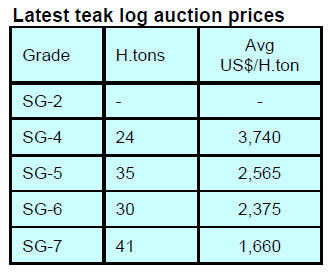
7.
INDIA
CenturyPly cancel plans for MDF production
in
Vietnam
The July announcement from the Indian government that
an anti-dumping duty will be imposed on MDF imported
from Vietnam has caused CenturyPly India to reassess its
plans for investment in Vietnam.
The duty is said to amount to over US$60 per cubic metre,
roughly equivalent to 25 percent of the CIF price. At this
level production in Vietnam for the Indian market would
not be profitable according to CenturyPly so a decision has
been taken to divest its stake in the Singapore subsidiary,
Innovation Pacific, and exit from its MDF production plan
in Vietnam.
On the domestic front in India plans have been drawn up
for a new MDF plant in Hoshiarpur, Punjab which, itis
said, will be the largest plant in India.
CenturyPly has investment heavily in facilities in
Myanmar and Laos. In Myanmar they manufacture veneer
and in Laos the company has a local partner to also
produced veneer.
A spokesperson from CenturyPly said they are very
eagerly waiting for the implementation of the new goods
and service tax as this could boost market opportunities
and should lift profits.
Importers complain log fumigation regulations out of
step with international standards
Timber associations across India have petitioned the
government regarding saying that the recent plant
quarantine regulations have become major problem for
Indian importers.
The current regulation stipulates that logs need to be
fumigated with methyl bromide prior to export from the
country of origin but international bodies such as the
International Plant Protection Convention, the United
Nations Environment Programme and the Montreal
Protocol classify methyl bromide as hazardous for health.
The petition says as many countries prohibit the use of this
chemical as such they are unable to fulfill the requirement
of Indian plant quarantine regulations and that alternative
and internationally accepted treatments must be adopted.
India imports a huge quantity of logs to meet the domestic
requirements and until recently were importing from
Myanmar, Laos, Vietnam, Malaysia, Thailand etc., but
since these countries have reduced or banned log exports
India relies more heavily on log imports from the EU, the
US, Latin America and Africa where the use of methyl
bromide is restricted.
Plantation teak prices
Demand for teak has improved and some shippers have
changed the prices for small size logs.
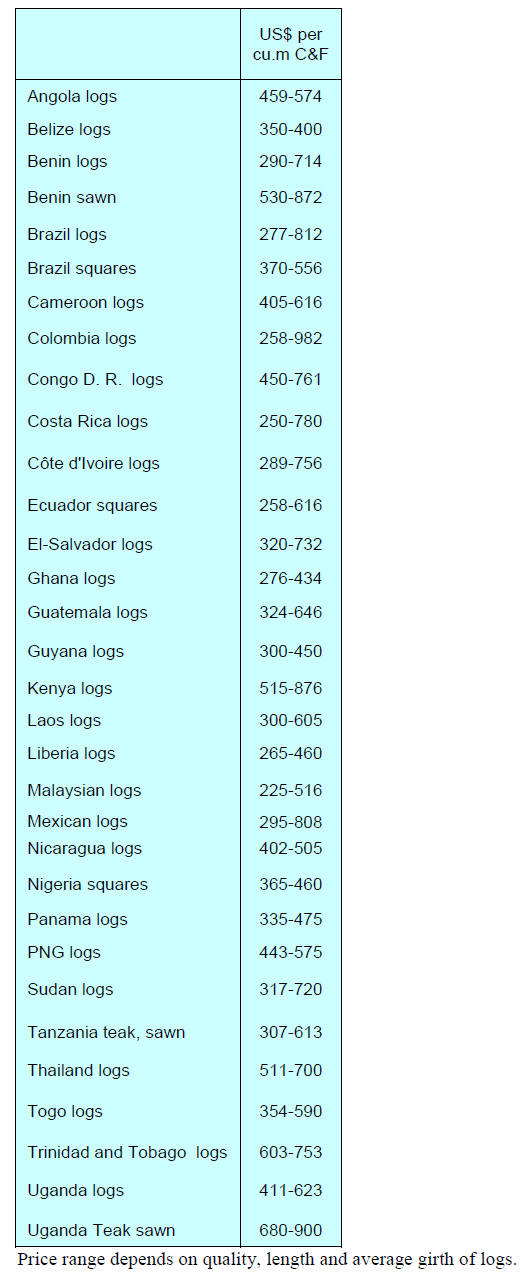
Prices from the three new plantation teak log
suppliers
remain unchanged at: Taiwan P.o.C (US$1036 to 2126 per
cu.m C and F), China (US$855 to 1118 per cu.m C and F)
and Honduras (US$471 to US$539 per cu.m C and F).
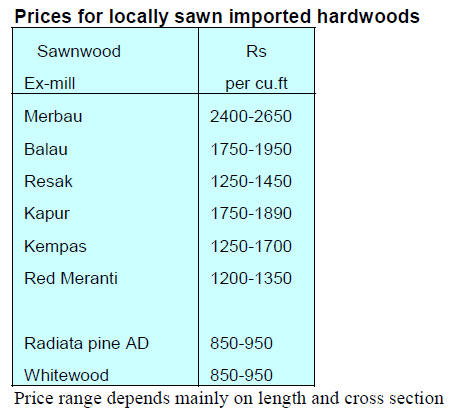
Myanmar teak flitches resawn in India
Domestic demand continues to firm but has not yet
impacted pricing.
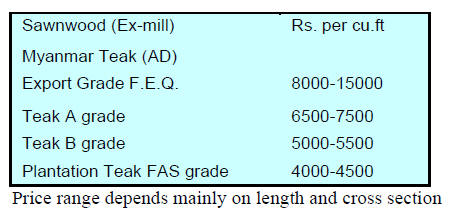
Prices for imported sawnwood
Demand for imported sawnwood remain weak such that
there are no opportunities for price increases.
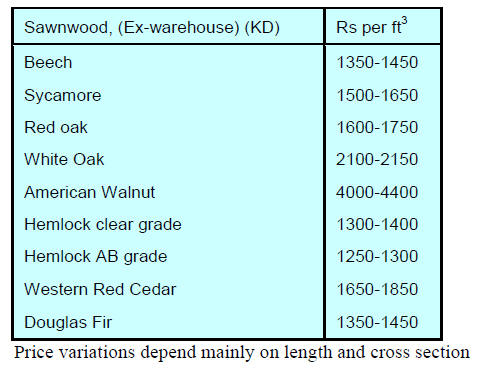
Prices for WBP Marine grade plywood from domestic
mills
Increased investment in plywood production has created a
situation of over-supply which is impacting sales volumes,
pricing and the bottom-line of manufacturers.
The building and construction sectors are active but the
glut of standard panels offers no opportunity for
manufacturers to achieve better prices which are long over
due.
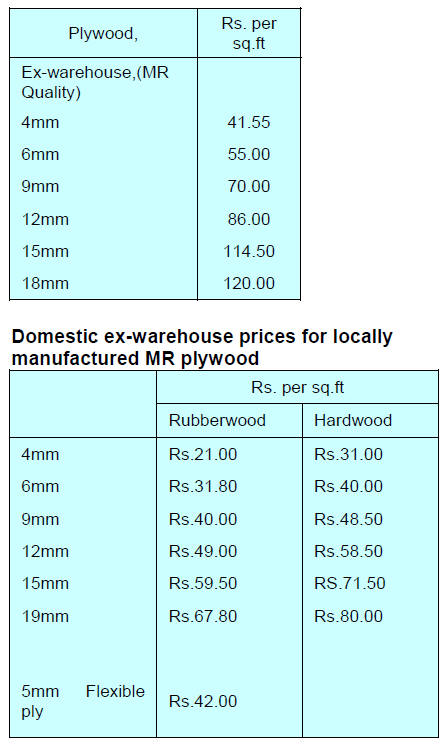
8.
BRAZIL
August export up-date
In August 2016, Brazilian exports of wood products
(except pulp and paper) increased 21% in value compared
to August 2015, from US$216.0 million to US$262.0
million.
Sawnwood export volumes and value rise in August
August pine sawnwood exports rose 36.0% year on year
from US$26.1 million in August 2015 to US$35.5 million
this year. The volume of pine sawnwood exports rose by
around 50% over the same period, from 118,700 cu.m to
178,500 cu.m.
Tropical sawnwood exports also jumped in August rising
33% from 23,200 cu.m in August 2015 to 30,900 cu.m. At
the same time the value of exports increased 32% from
US$11.4 million last August to US$15.0 million in August
this year.
Mixed performance from plywood exporters
The value of August 2016 pine plywood exports dropped
compared to August 2015 from US$38.9 million to
US$33.1 million but the volume of exports jumped 42%,
from 103,900 cu.m to 148,000 cu.m, over the same period.
However, exports of tropical plywood increased by almost
91% in August this year from 7,500 cu.m in August 2015
to 14,300 cu.m this year. At the same time the value of
exports rose around 56%.
First half 2016 tough for furniture makers
While August furniture exports increased by around 13%,
this year has been tough for furniture manufacturers. The
contraction of the Brazilian economy has impacted all
sectors and the furniture industries are no exception.
According to a report from the Market Intelligence
Institute (IEMI), between January and June this year
Brazilian furniture production, in terms of number of
pieces produced, was down almost 15% compared to the
first half of 2015.
Over the same period furniture imports dropped around
13%. Perhaps of most concern is the indication from IEMI
that productivity in the furniture manufacturing sector
worsened.
To address the challenge of weak demand the Furniture
Industry Association of Rio Grande do Sul (MOVERGS)
says the solution is to maintain investment in advanced
technologies and pay more attention to product design and
market diversification.
Strategic export markets identified by furniture sector
panel
The Brazilian Furniture Industry Association
(ABIMÓVEL) organized a panel discussion focused on
the challenges in the furniture manufacturing sector at its
recent Furniture National Congress.
One major concern voiced was the trend in demand level
in the US and China and the impact of this on the global
economy.
The panel attempted to identify strategic export markets
after analysing the potential in various countries. The
panel concluded that for Chile and Mexico efforts should
be focused on resuming trade, for Colombia, the United
States and Panama the panel suggested there is a need to
strengthen trade relationships.
For the United Arab Emirates and the United Kingdom the
panel concluded these markets were beginning to be aware
of Brazilian furniture.
The Brazilian Agency for Industrial Development (ABDI)
contributed to the panel discussion and said the agency has
a great interest in the furniture industry and would
encourage the adoption of advanced manufacturing and
management technologies to secure greater market access.
Export ¡°Brazilian-ness¡± to increase international
market share
In the ten years since 2005 Brazilian timber exports have
almost halved (-44%) while imports have increased
dramatically. This, and the fact that Brazil slipped from
the 12th to 32nd place in the ranking among exporting
countries, has been reported by IEMI.
Prospects for a short term recovery in furniture sales are
not good but IEMI is forecasting that global and domestic
demand should begin a recovery towards year end but it is
unlikely that the furniture sector will see production rise to
the 476 million pieces produced in 2013. IEMI has
forecast that it could be until 2022 that such output could
be once again attained.
In offering a solution for increasing exports IEMI suggests
the furniture industries could focus on innovation and
characteristics that differentiate Brazilian products from
those from other countries, i.e. increase the ¡°Brazilianness¡±
of products.
This could involve using the wide-range of native timbers
along with innovative designs to gain competitive
advantage in the international market.
Forestry sector has a role in the Paris carbon
emissions agreement
Brazil ratified the Paris Agreement on climate change
establishing the country's commitment to reduce carbon
emission and according to the Brazilian Tree Industry
(IBA), the Brazilian plantation sector has a role in meeting
Brazil´s goals.
As a totally renewable resource it is estimated by IBA that
the 7.8 million hectares of forest plantation areas in Brazil
are responsible for stock of approximately 1.7 billion
tonnes carbon equivalent.
In addition to carbon removal and carbon stocks in tree
plantations the sector, according to IBA generates and
maintains carbon reserves of approximately 2.48 billion
tonnes of CO2eq in protected areas.
IBA has suggested that policies that recognize biomass as
carbon neutral when secured through sustainable
management should be adopted and that these should
recognise the positive contribution made by all forms of
forest.
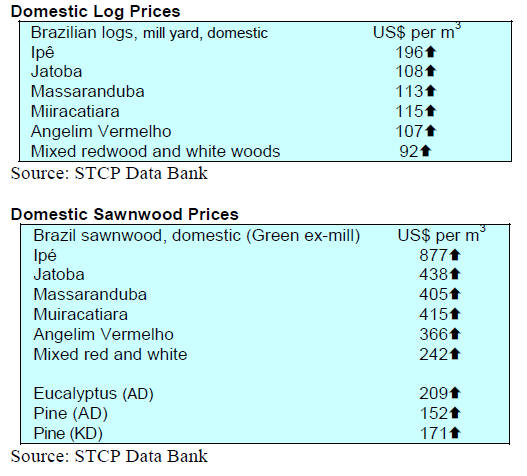
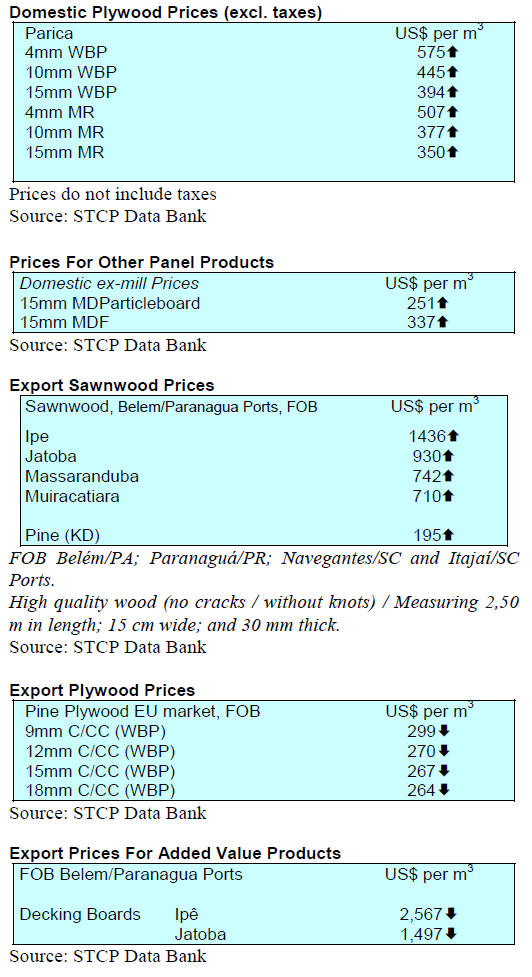
9. PERU
Imports of composite boards increase
In the first eight months of 2016 Peruvian imports of
particleboard/MDF totalled US$49.2 million, an increase
of 6.9% compared to the same period in 2015.
The main importer was Novopan Peru at US$20.8 million
(2015: USD 19.3 million) and a 42% share of total imports
of panels. The second main importer was Arauco Peru
with imports of US$10 million (2015: 10.0 million) and a
market share of 21% (2015: 22%).
Ecuador remained the largest supplier with a market share
in the first eight months of 44% of total composite
imports, followed by Chile with 35% and Spain with 12%.
Brazil ships composite panels to Peru and in the first eight
months had an almost 9% market share.
New forest development programme launched
The Minister of Agriculture and Irrigation (Minagri), Jose
Manuel Hernandez, announced that its work will include a
programme of aggressive forest development to reforest
areas in the highlands of Peru.
The minister said it is unacceptable that the country loses
around 150,000 hectares of forest every year through
deforestation. He said that Minagri is signing agreements
with six national universities which have agricultural
activity programmes to launch a ¡®Young Agro
programme¡¯. This will provide an opportunity for students
of these universities conduct fieldwork with Minagri and
at the same time earn study credits.
